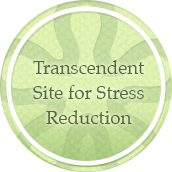We are all out of balance to some degree.
Triangle pose to the right may be a luxurious journey over smoothly oiled joints and long muscles. Turn to the left, and it feels like there’s sand in your joints and your hamstrings have, inexplicably, snapped an inch shorter.
There’s the one wobbly standing leg in Warrior III, the uber-tight shoulder in Gomukhasana, the short hamstring on one side in Janu Sirsasana. They bump us up against our limitations in every two-sided pose.
I’ve been thinking a lot about asymmetries lately, in part because the last two posts from the superbly obsessive Yoga Spy have dealt with why we always roll out of Savasana on the right side, and how to address asymmetrical poses and asymmetrical bodies in practice.
Yoga Spy even has a system for changing the hand clasp in headstand based on odd and even days – on even days the left hand is on top, on odd days, the right.
It’s true that asana practice promotes symmetry, and that much of our work consists of bringing our bodies into balance. As the excellent website for the Iyengar Yoga Association of Greater New York has it:
People tend to stretch from their more flexible areas and rely on their better-developed muscles for strength, thus reinforcing postural habits. Iyengar Yoga encourages weak parts to strengthen and stiff areas to release, thus awakening and realigning the whole body. As the body moves into better alignment, less muscular work is required and relaxation increases naturally.
But I can think of five good reasons to cherish our unbalances, even as we yes, work to remove them.
1. Asymmetry wakes you up. Every time we take a two-sided pose, our hips, shoulders and hamstrings make sure that we have two different experiences. There’s more to notice, less of a tendency to fall into habit patterns and space out. On really dramatic differences – kicking up with the second leg in full arm balance, for instance – it’s less a different pose than a whole new, if somewhat unwelcome, continent to explore. Nonetheless, asymmetry keeps it new.
2. Asymmetries introduce you to your own body.
Yogis know which hip is stiff, which shoulder is tight, which hamstring resists in forward bends. Long before the stiff hip starts to wake us up in the middle of the night with a dull ache or a sharp pain, we’re at work on the solution.
As we resolve imbalances on one level, another level appears, a lot like peeling an onion. Janu Sirsasana used to be hard on my left side, because the hamstrings were tighter. My left hamstrings are still tighter than the right, but now they have enough give for the pose. Now it’s the right side that’s more restricted, because my slight scoliosis, which I didn’t much notice before, takes me more easily to the left.
3. Asymmetries allow you insight into how your mind constructs categories. Do you label the sides as “easy” and “hard,” or worse, “good” and “bad”? Is there a moral judgement implied on that problematic shoulder?
My own preference is for “sticky” and “smooth,” in part because there are times when “sticky” is good.
4. The smooth side teaches joy, but the sticky side teaches attention to detail. When you’re on the sticky side, you aren’t tempted to glide on through to your deepest place. That means you have time to stop and feel the effect of every action, and what you learn will stick with you – an example of good stickiness at work.
5. Finally, having a tighter or more difficult side provides boundless opportunity to practice friendliness and open-hearted curiosity towards ourselves. And since we always seem to find ourselves the most difficult people to be friendly to, all opportunities are welcome.
How do you feel about your imbalances? Are you just finding out what they are? Have you developed ways to work with them? Let me know.
Image: flickr creative commons, by Sari Choche


Comments on this entry are closed.
This is an important posting and I feel that easing into balance is an ongoing process. We are our imbalances!
Thanks!
Heidi,
Good to hear from you! Yes, I’d agree that easing into balance is an ongoing process - a lifetime’s worth, I’d say.
Inspiring way to frame this topic, coming from someone who definitely feels ‘stickiness’.
To your 1st and 4th points, I find that the sticky spots help give me feedback on my practice in general. I can feel more acutely where I may be making some positive change (whether that be in flexibility/loosening, staying with the breath for longer periods of time, better alignment etc).
So I am grateful for that feedback that I get from stickiness that might not otherwise be as apparent when things are smooth.
And I find the sticky spots really give me the opportunity to work with the breath and feel how that really does help!
Thanks again for your always inspiring and provocative content!